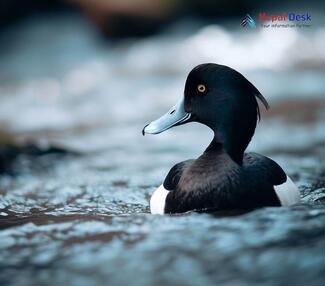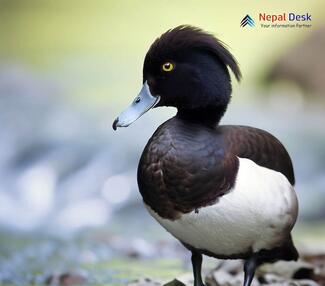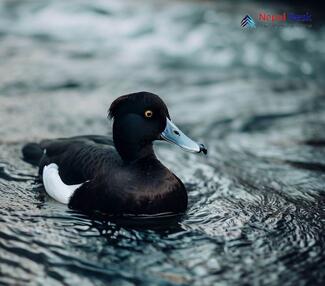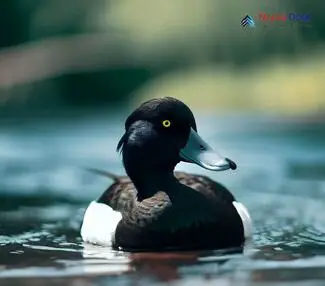The Tufted Duck (Aythya fuligula) is an eye-catching diving duck species belonging to the Anatidae family. Boasting iridescent plumage and striking features, this medium-sized waterfowl never fails to capture the attention of avid birdwatchers around the world. Predominantly found in Eurasia, the Tufted Duck also makes its presence felt in the tranquil wetlands of Nepal. Let's dive deeper into this magnificent species and unveil the fascinating details that make it stand out among other waterbirds.
A Glimpse into the Appearance of Aythya fuligula
One of the most striking features of the Tufted Duck is undoubtedly its contrasting plumage. Males sport a glossy black head and neck paired with deep blue hues, highlighting their distinctive tuft emanating from the back of the head. The rest of their body is covered with an elegant blackish-gray plumage complemented by a bold white patch at each side.
In contrast, female Tufted Ducks are adorned with a significantly tamer appearance, featuring brownish plumage all over, yellow eyes, and a less prominent tuft. Additionally, their sides are usually lighter in color as opposed to their male counterparts.
Habitat Preferences and Distribution
Although their primary range extends across Europe and Asia's northern regions, Tufted Ducks have been known to fly considerable distances for both breeding and wintering purposes. They can often be spotted loitering around freshwater habitats such as lakes, reservoirs, marshes, and even slow-moving rivers.
In Nepal, Tufted Ducks are predominantly found in wetland areas with abundant submerged vegetation during winter months. Some popular sites for spotting these awe-inspiring waterfowl include Koshi Tappu Wildlife Reserve and the Rara, Phewa, and Begnas lakes, as well as the Jagdishpur Reservoir.
Dietary Habits and Behavior
An adept predatory diver, Aythya fuligula mainly feeds by diving underwater to forage its preferred prey items such as aquatic insects, seeds, mollusks, and plant matter. Besides diving, Tufted Ducks may also dabble on the water's surface in search of food.
Conservation Status and Efforts in Nepal
The Tufted Duck is currently classified as a species of Least Concern according to the IUCN Red List. However, human activities such as habitat destruction and climate change may pose challenges to their future well-being. In Nepal, efforts like the Koshi Tappu Wildlife Reserve's establishment and other conservation initiatives facilitate the protection of various bird species, including the Tufted Duck.
In conclusion, the alluring Tufted Duck (Aythya fuligula), with its charming appearance and interesting behaviors, makes for an excellent addition to Nepal's wildlife inventory. Stepping up our conservation efforts and raising awareness about this captivating bird will ensure that future generations can continue to be charmed by its unique presence in Nepal's wetlands.




